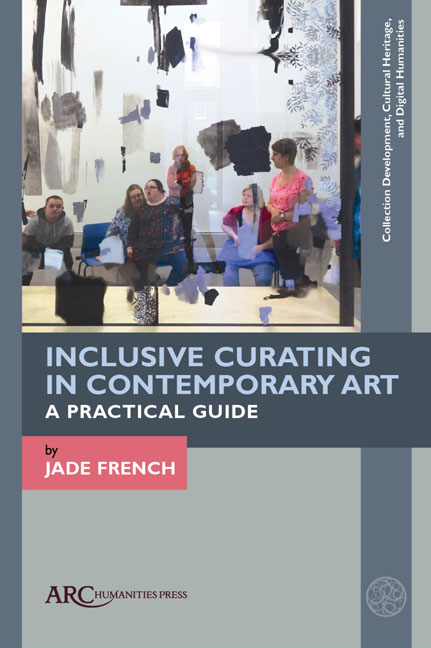Chapter 4 - Developing Interpretation
Published online by Cambridge University Press: 20 November 2020
Summary
At this point in the process of inclusive curating, inclusive curators will have already researched art museums, exhibitions, and curatorial styles and interrogated these experiences as a group. They would have worked together to develop their big idea for the exhibition, as well as finalizing the acquisition of artwork for display through exploring collections, working with artists, or commissioning new works. Inclusive curators must now turn their attention to thinking more closely about who the potential audiences might be for their exhibition, and how best to support them to understand and interpret their work.
The practice of interpretation addresses how museums “facilitate encounters between object and observer.” Interpretation, broadly speaking, involves anything that helps visitors make sense of the museum and its exhibitions. It typically includes artist statements, captions, gallery wall texts, videos, audio guides, catalogues, and tours. As art education scholar Terry Barrett claims: “A work of art is an expressive object made by a person, and therefore, unlike a tree, a rock, or other mere things, it is always about something; thus, unlike trees or rocks, artworks call for interpretation.” In particular, the crux of curatorial practice in contemporary art is the construction of artistic mean-ing through the exhibition, which is largely down to the curator. Part spectacle, part socio-historical event, part structuring device, exhibitions—especially exhibitions of contemporary art—“establish and administer the cultural meanings of art,” and interpretation plays a key role in this. The nature and role of interpretation in art museums is complex and widely debated; from its role and scope, its relationship with learning, ethical entanglements, to its professionalization and incorporation into job roles and departments. For inclusive curators, questions concerning the interpretation of artwork become more visible: How will the artwork be interpreted and why? What is omitted or assumed? Who is the audience? What knowledge does a visitor need to bring with them to “de-code” this work of art?
This chapter begins by providing an overview of the key debates concerning interpretation in the context of contemporary art. We will examine the art museum's “authoritative voice,” preference for overly textual strategies that some criticize as being reliant on inaccessible, specialist language or “artspeak,” and the problematic nature of labelling.
- Type
- Chapter
- Information
- Inclusive Curating in Contemporary ArtA Practical Guide, pp. 77 - 96Publisher: Amsterdam University PressPrint publication year: 2020



